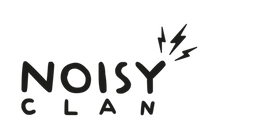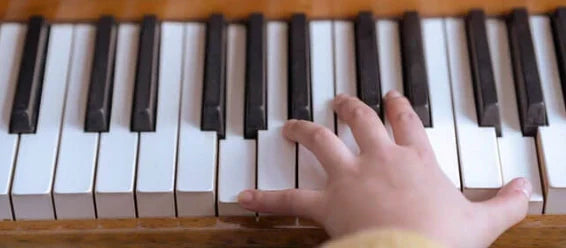Chords are your best friends in your musical journey. What's more, they are the building blocks of modern music. Yes, whatever music genre you like and whichever artist you love, chances are they made a career by playing chords.
The chords you learn today will be tools in your box for as long as you make music.
We’re going to break this topic down into its fundamentals and offer you some actionable advice along with fun exercises so you can practice what you learn right now.
Are you ready to take the biggest leap in your playing so far? Well, buckle up because here we go!
Chords Fundamentals
Let’s start by talking about the fundamentals of chords. These are characteristics that apply to chords being played on any instrument.
What Is a Chord?
A chord is a series of notes played at a unison. This means that the basics of a chord are two or more notes played at the same time.
Depending on what notes they are, what comes before, and what comes next, you can generate many actions with chords.
Enter The Triads
Most chords, including the fundamental chords in guitar, pianth and other harmonic instruments are based on three notes. The combination of three notes is what we call a triad.

Triads are made of:
-
The root note or tonic (the note naming the chord)
-
The third
-
The fifth
You are probably thinking ...“Not so fast, brainy, what is the third and the fifth?” So here is the breakdown:
Musical notes can be counted from the first to the seventh. This is how they get their names! You start from letter A and move to the G. Every letter in between those two, names is a note and thus, names a chord.
So, let’s start with our simplest example, the C major chord. The root of the chord is obviously going to be C. From there, count up to a third, that’s E. Finally, count five from C and you get a fifth, G.
So, there you go, your first triad and chord, C major (C – E – G)!
Major vs Minor
Before talking about the rest of the pack, let’s talk about chords and their functions. What do chords do? Well, while the melody and the lyrics tell one story, chords tell another story. Yes, chords convey emotions and can sound happy or sad. That’s what divides major from minor chords.
But how do you know when a chord is major or minor? The differentiating note is the third. The third will define if a chord is major or minor.

Let’s take A Major for example. The chord of A Major is made of the triad A – C# - E. How can we turn this into a minor chord? Simple, just lower the third one semi-tone (aka one fret of the guitar, one key on the piano).

As a result, what you have is A minor, with the triad A – C – E.
But why is this important? Well, besides being an important aspect of understanding chords for guitar or piano, this changes the mood, feel or vibe of a composition.
In other words, if you choose major or minor when writing a song, I'll be able to understand just how you feel through lyrics AND chords.
But enough theory, let’s get to the action.
Five Guitar Chords (To Play a Thousand Songs)
What follows are the basic guitar chord charts for beginners. These are what we call the fundamental open chords or the 5 basic guitar chords for beginners with which you can play countless songs.
Why are they called “Open chords”? Well, they all involve at least one string played without fretting.


What About Piano Chords?
We’re going to see some piano fundamentals. These are the major and minor chords to play on piano.




Some Exercises
Knowing chord fundamentals is what you need to play songs. There’s no other aim to learn chords for guitar than using them to make music.
The first exercise is playing major and minor chords next to each other:
-
A – Am
-
D – Dm
-
E - Em
Now, let’s use them to play a different sequence of chords. We’ll go deeper into chord progressions in a little bit, for now try these chord sequences.
-
C – F – G
-
C – F – Am – G
-
C – Am – F – G
-
Dm – Am – C
Power Chords & Octaves (It’s Time to Rock!)
What if instead of using a triad, you would use two notes? After all, a chord is a combination of simultaneous notes, they can be two as well. This is just a little bit of music theory fundamentals, nothing complicated.
Let’s see power chords and octaves, two types of two-note chords following a very easy formula to play them all around the fretboard or keyboard.
Power Chords
Power chords are also known as fifths. All you need to play is the tonic or root note and the fifth. By definition, these chords are neither minor or major, because the third defines that and is absent here.
For guitar players fifths are very easy to find, because the fifth is one string below, two frets away from the tonic or root. Piano players just subtract the third from all the chords you learned above.
Here are some examples:

Octaves
Just like power chords or fifths, octaves are two-note chords formed by the note and its octave. Again, as long as you know the position of the root note, you can play these chords all over the fretboard or the keyboard.
For guitarists this is very easy because the octave for the sixth and fifth string is just two strings below, two frets away. Piano players just play the note and the same one an octave above.
Here are some examples:

The Bottom Line
Understanding chords is understanding the fundamentals of music. They are the building blocks of modern music and the most important step in your music journey.

After learning these keyboard and guitar fundamentals, you’re ready to play countless songs by most of your favourite artists.
Stay tuned for more because this is just dipping your toes in the water, there are plenty more advanced chords to learn and much more music to play.
Happy playing!





